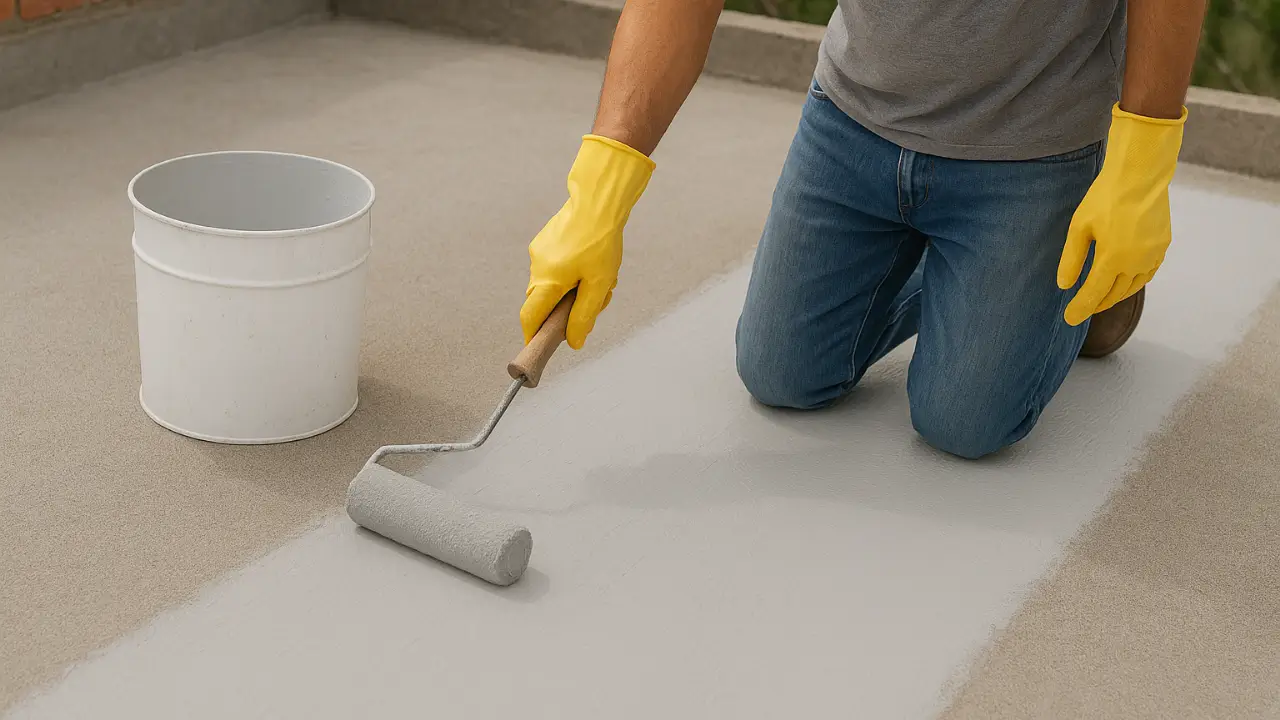
In a country like Türkiye, where all four seasons are experienced and certain regions are prone to heavy rainfall, waterproofing is not a luxury—it’s a necessity. Unfortunately, a large proportion of buildings in Türkiye suffer from either poor-quality waterproofing or complete lack thereof, often due to negligence during construction or the use of substandard materials and improper application methods. This oversight exposes structures to a host of physical, chemical, and biological risks.
Waterproofing is not just about protecting concrete. It directly affects structural integrity, indoor comfort, energy efficiency, and occupant health.
So, what are the real risks of living in a building without proper waterproofing?
1. Structural Damage and Loss of Load-Bearing Capacity
Whether a building’s structure is made from reinforced concrete, steel, or wood, prolonged exposure to moisture degrades its performance. In reinforced concrete systems, water penetrates the concrete and reaches the embedded steel rebar, causing corrosion. Rusting rebar expands, cracks the surrounding concrete, and gradually undermines the load-bearing capacity of the entire structure.
This is especially problematic in foundations and basements, where groundwater and soil moisture are most active. Over time, the structure becomes increasingly vulnerable to seismic activity and other external forces. Inadequate waterproofing, therefore, poses a direct threat to the building’s structural safety.
2. Mold, Dampness, and Indoor Air Quality Issues
One of the most common consequences of poor waterproofing is the development of mold and persistent dampness on interior surfaces. Moist environments create ideal conditions for mold spores, which can spread through the air and lead to a range of respiratory problems such as asthma, bronchitis, allergic reactions, and other chronic conditions.
Vulnerable groups—such as children, the elderly, and individuals with weakened immune systems—are particularly at risk. Mold not only affects air quality and aesthetics, but also significantly reduces the quality of life indoors.
3. Compromised Thermal Insulation and Increased Energy Consumption
Many people separate waterproofing from thermal insulation, yet the two are closely connected. Moisture intrusion degrades the performance of insulation materials drastically. Wet walls conduct heat up to 10 times more than dry ones.
As a result, buildings without waterproofing require more energy for heating in winter and cooling in summer. This leads to significantly higher utility bills and contributes to increased carbon emissions—a long-term environmental and economic burden.
4. Damage to Interior and Exterior Finishes
Moisture infiltration leads to blistering paint, cracked plaster, peeling ceilings, and deteriorated wall finishes. These issues are not just cosmetic; they result in ongoing maintenance costs and reduce the building’s market appeal.
Exterior damage can lower property value significantly, making it difficult to sell or rent. A building with evident water damage becomes a liability rather than an asset.
5. Electrical Hazards and Fire Risk
Water intrusion into walls or ceilings can reach electrical wiring, creating short circuits or even fire hazards. This is a serious risk to both property and life safety.
Bathrooms, kitchens, and basements are particularly vulnerable. In buildings without waterproofing, water seepage into electrical systems can result in fatal accidents.
6. Water Accumulation in Elevator Pits and Mechanical Rooms
Basement-level facilities such as elevator shafts and mechanical rooms are frequently compromised in buildings without proper waterproofing. Groundwater or rainwater ingress can damage electrical motors, pumps, and control systems.
This not only results in costly repairs but also threatens operational safety. Water accumulation in boiler rooms or pump rooms shortens equipment lifespan and increases operational costs.
7. Persistent Dampness in Ground-Floor Apartments
Residents of ground floors and basements experience chronic dampness if the building lacks waterproofing. Moisture seeping through walls degrades finishes, damages furniture, and renders spaces unusable.
Prolonged exposure to damp conditions—especially for children—can trigger health issues. Flooring materials such as carpet and wood also suffer irreversible damage.
8. Roofing Failures from Freeze–Thaw Cycles and Trapped Humidity
Unprotected roofs are highly susceptible to seasonal damage. During winter, infiltrated water freezes and expands, widening cracks and damaging roof structures. In summer, evaporating water creates humidity pockets, leading to internal condensation.
This freeze–thaw cycle accelerates roof deterioration and causes leaks, paint damage, and mold issues on top-floor apartments.
9. Long-Term Structural Degradation
Water is the most aggressive agent of degradation in construction. Prolonged exposure leads to carbonation of concrete, corrosion of steel reinforcement, and eventual failure of waterproofing membranes. These processes are often invisible but accumulate over years, resulting in irreversible damage.
Over time, the building silently loses its structural integrity. During urban transformation assessments, such buildings are often classified as “high-risk structures.”
10. Decreased Property Value and Insurance Challenges
Water damage significantly lowers a property’s perceived value. Signs such as musty odors, moldy walls, and peeling paint discourage buyers and tenants. In many cases, insurance providers either raise premiums or refuse coverage altogether for buildings lacking adequate waterproofing.
This creates not only financial losses but also potential legal and liability issues.
Waterproofing Is Not a Luxury—It’s a Necessity
Considering the range of structural, financial, and health-related risks involved, investing in waterproofing is not optional—it is essential.
If your building is showing signs of moisture, dampness, or water leakage, it’s crucial to act without delay. Partner with a qualified team to assess the situation and implement appropriate waterproofing solutions using the right products for the right surfaces.
At Dryfix, our technical team specializes in on-site inspections and customized waterproofing strategies tailored to each building’s needs. Whether it’s terraces, roofs, bathrooms, retaining walls, or under-tile applications, we offer the correct system with proven performance. Backed by deep technical expertise at every step of the project, we deliver lasting protection and peace of mind.
Remember: The small water intrusion you ignore today may become tomorrow’s costly disaster.
